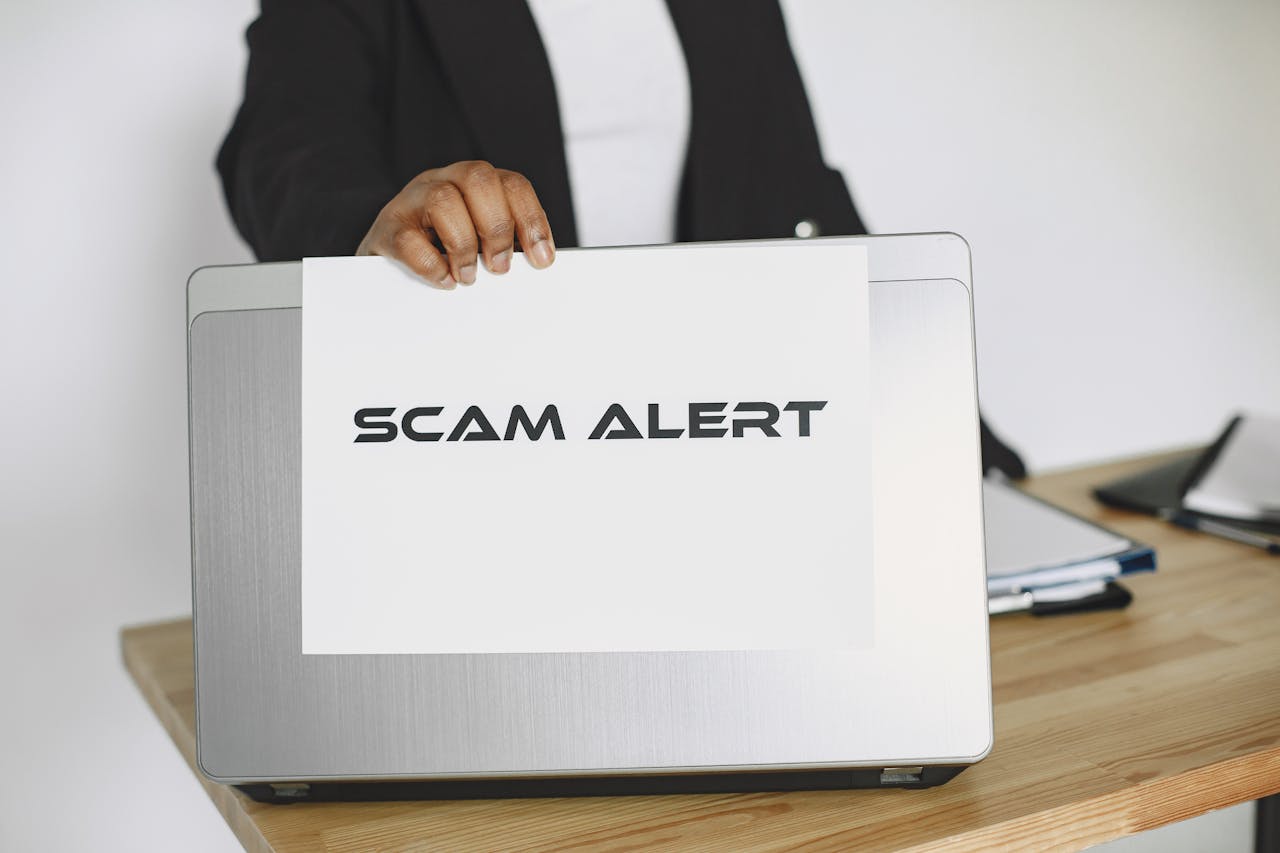What is phishing and why does it affect appointment-based businesses?
Phishing attacks are especially dangerous for appointment-based businesses because they sneak in through the same trusted channels you use every day to connect with clients.
An email reminder for their 3 PM appointment looked legit. Logo? Spot on. Address? Familiar. Link? Malicious. A single click later, your customer’s trust was gone, stolen along with their data.
In a world where bookings drive your bottom line, phishing doesn’t just skim the surface. It’s a direct hit to the credibility you rely on.
Curious how to tell a legit message from a lurking trap? Want to know what you can do before someone else impersonates your business? Let’s break it down.

Source: Pexels
How phishing finds a way into booking systems
Phishing schemes are designed to look legitimate. They imitate trusted messages and bait people into clicking links or submitting personal information. For appointment-based businesses, that might mean:
- Fake confirmation emails that appear to come from your front desk
- Phony reschedule notices with malicious links
- Imitation customer service chats asking clients to verify login credentials
- Bogus loyalty program emails urging clients to update their card information
- Counterfeit wait list alerts are pushing recipients to click a shortened link
- Fake satisfaction surveys are designed to collect birth dates and home addresses
Scammers capitalize on urgency. If someone thinks their massage appointment was canceled, they’re more likely to click quickly. This is exactly what bad actors count on.
Encourage clients and team members to verify suspicious links before clicking. Free tools like a safe link checker can quickly scan URLs and flag potential threats. It’s a smart, simple buffer between your systems and the chaos of bad links.
Why appointment-based businesses are now prime targets
The digital infrastructure behind appointment-driven services is rich ground for exploitation. Here’s why these businesses are especially vulnerable:
- Consistent, automated messages: Clients expect reminders and follow-ups: this makes impersonating them easier.
- Familiar branding and voice: Scammers can easily copy logos, appointment language, or your business name.
- Fast response expectations: Customers are used to acting quickly to secure or reschedule appointments, giving them less time to assess suspicious messages.
- Reliance on booking platforms: Many businesses use third-party systems that may not offer end-to-end encryption or fraud protection.
What phishing actually looks like in practice
Phishing attacks are especially dangerous for appointment-based businesses because they sneak in through the same trusted channels you use every day to connect with clients.
Take confirmation emails, for instance. A bogus message might look exactly like the ones you send, featuring your business name, a real-looking time slot, and even the client's first name. These details lull people into a false sense of security.
Then there are fraudulent rescheduling requests, which claim an appointment has been moved or canceled, urging clients to confirm the changes through a link.
That link, of course, is a trap: leading not to your booking system but to a phishing site built to steal login credentials or personal data.
Fake intake forms are another tactic. Posing as routine pre-appointment paperwork, these forms ask for sensitive information like:
- Insurance details
- Birth dates
- Social security numbers
- Medical history
- Driver’s license numbers
Clients assume they’re prepping for a visit, when in reality, they’re handing over personal data to cybercriminals.
Imposter support messages are on the rise. These might appear to come from your team and ask clients to “verify” billing or payment information. The messages are crafted with just enough polish and urgency to convince someone to act fast, before they realize it’s a scam.
How business owners can stay ahead of scams
Building digital defenses doesn't mean hiring a cybersecurity team overnight. Small changes go a long way. Here’s how to start:
1. Standardize your communication
Always send emails from the same address and use a consistent tone. Include disclaimers, pointing out that you never ask for sensitive data by text.
2. Teach your staff what to watch for
Show staff how to inspect URLs and spot unusual patterns.
3. Use stronger authentication
Implement two-step login processes for any staff-facing platform connected to client data or appointments.
4. Monitor for imitation sites
Scammers often spin up fake landing pages to harvest login info. Regularly search for lookalike domains using your business name.
No system is impenetrable, but vigilance and public-facing transparency create friction for scammers looking for easy targets.
Read also: Why is payment fraud detection crucial for fitness business sustainability?
Modern security tools to integrate now
Using advanced tools doesn’t have to mean a complicated overhaul. Here are smart add-ons that improve resilience without slowing down operations:
- Business-class email systems with real-time threat scanning
- Appointment platforms with built-in encryption and user verification
- Password managers with breach alerts
- Firewalls that flag suspicious activity
Keeping systems updated and avoiding weak spots like reused passwords or unsecured public Wi-Fi also helps prevent intrusion.
The cost of inaction isn’t just digital
Beyond the technical damage phishing causes, the human cost is often more severe. A single impersonated message can lead to:
- Clients losing trust in your brand
- Legal trouble if client data is exposed
- Appointment no-shows due to confusion or fear (especially dangerous for businesses like hair salons or barbershops)
- Negative reviews based on fake interactions
But the flip side is powerful. When a client sees that your business values cybersecurity and communication transparency, their trust deepens.
Phishing isn’t going away: But it doesn’t have to win
Scammers will always follow the path of least resistance. The more predictably you communicate, the more proactively you verify, and the more informed your clients are, the harder it becomes for phishing to gain a foothold.
Read next: 8 essential tech tools for service-based businesses in 2025
